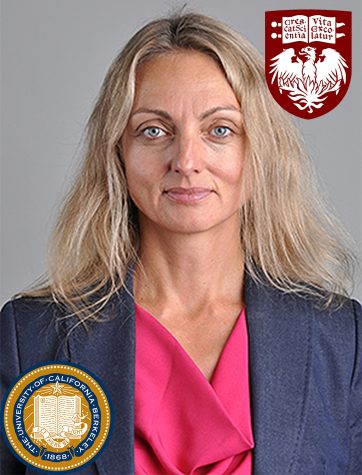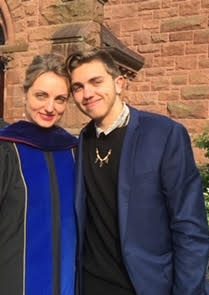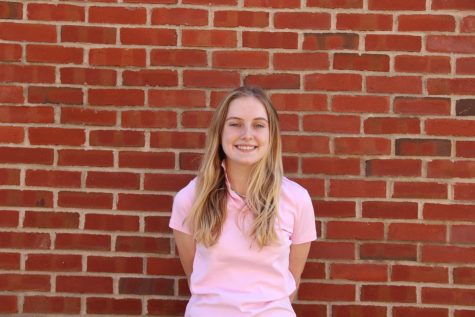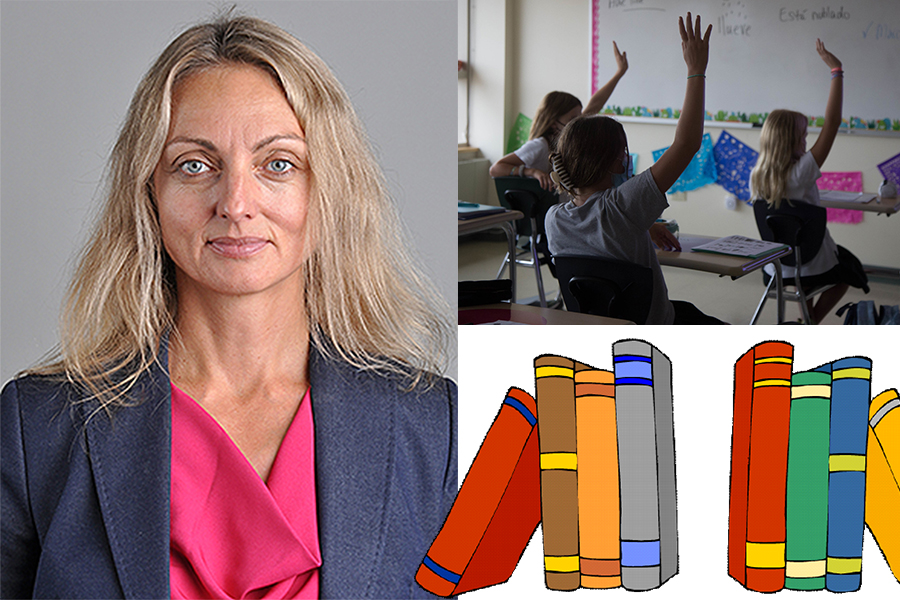Dr. Marta Napiorkowska expands the minds of King Street
Dr. Napiorkowska inspires students with academic confidence in the classroom.
During her inaugural semester on King Street, Dr. Marta Napiorkowska, Upper School English Teacher, has imparted extensive literary knowledge and cross-disciplinary expertise to students. As the 2021-2022 academic year begins its gradual adjournment, Dr. Napiorkowska continues to prioritize creating an honest and compassionate learning environment in her classes.
Dr. Napiorkowska studied biology at Cornell University in Ithaca, New York for two years prior to finishing her undergraduate education at the University of California, Berkeley. She earned a Bachelor of Arts in Comparative Literature and Creative Writing. Dr. Napiorkowska then completed a Doctor of Philosophy (Ph.D) program at the University of Chicago with an emphasis on literary analysis. Reflecting on the divergent academic cultures of the three institutions she attended, Dr. Napiorkowska cited the University of Chicago’s pedagogy as the primary influence on her own teaching philosophy. She believes that high intellectual standards promote diligence and result in gratification amongst students.
“The University of Chicago, in particular, is known for being very rigorous,” Dr. Napiorkowska said. “It was very hard for me, I stumbled a lot, and faced many challenges. What I learned there is the deep satisfaction you get when you work really hard because your teachers set the bar high and you do more than you thought you could. That is the way I like to teach: I like to set the bar high and then students do more than they think they are capable of doing. I hope they feel the deep satisfaction of coming out of class and knowing that they are more capable than they initially thought.”

While studying biology, Dr. Napiorkowska was drawn to the humanities discipline because of its examination of human behavior. She retained strong interests in Native American culture and sustainability, both of which translated to passions for social justice and environmental activism. In Ithaca, she frequently attended town meetings in which community members would argue over environmental issues instead of efficiently presenting solutions. These experiences within the science discipline developed Dr. Naprikowska’s fascination with literature and the level of broad thinking the humanities offers.
“Over time, I realized that it is not the science that is the problem, it is people who are the issue when we try to problem-solve,” Dr. Napiorkowska said. “So I started getting interested in people and their motivations. I decided literature is the best place to explore human nature because there you have the widest representation of people, thinking, and philosophy.”
After shifting disciplines, Dr. Napiorkowska initially considered teaching literature as a professor at the collegiate level. She discovered, however, that her true passion was working closely with students. This high level of interaction is found primarily within secondary education.
“I was a single mother as a graduate student,” Dr. Napiorkowska said. “I eventually ran out of funding and then there was the 2008 economic crash, so I really needed to get a job. I was very lucky that I got a teaching position at an excellent independent school. There I realized how much I loved the student-teacher interaction that you do not get as a professor because you are so busy with research, your own projects, writing or applying for grants. I decided that having close interactions with students who are motivated and bright is such a rewarding life.”
In her classroom, Dr. Napiorkowska utilizes the Harkness method, which originated in 1930 at Phillips Exeter Academy, according to exeter.edu. The approach encourages student-led and discussion-based learning, with an emphasis on collaboration, rather than lecturing. Dr. Napiorkowska commented on how she has integrated Harkness philosophy into her ever-evolving teaching style.

“I first started teaching when I was still a graduate student,” Dr. Napiorkowska said. “My classes were focused around me lecturing and directing the conversation in a very heavy-handed manner. It was really built around my charisma, my personality, and my passions. I learned from my previous school that this approach does not translate to student learning. I switched to the Harkness method because it is very much about students driving the conversation. Now, my students are the ones talking and doing the research while I am the one who is listening, asking questions, and finding the places to push students’ thinking to the next step. Research has shown that students who are more engaged in their learning, whatever it takes to engage them, learn better, and that is ultimately what school is about. I am not as important to myself in the classroom as I once was. I feel like I am second, and the students are definitely first.”
To align with her conversational teaching methodology, Dr. Napiorkowska prizes honesty and believes that authenticity is integral to learning. She feels that students who voice honest opinions see the most edification in their intellectual thought process. In addition, open discourse leads to both individual and collective growth in classrooms. Dr. Napiorkowska remarked on how she as the teacher also learns from her students’ textual insights. The continuous learning that teaching allows, particularly in respect to literature, has kept her engaged in the education field.
“When students are honest, real conversations happen and you can have genuine critical thinking,” Dr. Napiorkowska said. “Those who are honest about what they do not understand or what they disagree with in a text undergo the most growth. I just love those conversations when everybody is pushing their boundaries. But it starts with honesty and not thinking ‘What does my teacher want me to say?’ or ‘How can I get the A?’ Those attitudes dull thinking, actually, they are never as good as those of someone being authentic. Even though I have a background and so-called expertise in what I do, I am always surprised by what I do not know and what students bring to the table. Works of literature change meaning over time, so a work of literature read by someone in 1950 is going to come across very differently in 1980 or 2010. I enjoy seeing students respond differently over the years and how a work of literature thereby comes to make different meanings for me as well. I am continually learning and always reading new things, that is what keeps me intellectually alive.”
Dr. Napiorkowska believes that a female-focused education is important because it allows students and faculty to hold open conversations about the challenges women face in the twenty-first century. With insight from her personal experiences, she hopes to instill students with the confidence to enter male-dominated fields of academia.
“Another reason I am a Harkness teacher is to give students practice with speaking up and holding their own in an academic setting,” Dr. Napiorkowska said. “I want to give students the confidence to disagree with classmates and professors in academic discussions, a confidence that comes from comfort with making mistakes as part of the process. I also want my students to become comfortable with that discomfort of thinking. Everyone understands and appreciates the physical discomfort of getting better at sports on a sports field: your muscles hurt and you are sore. Intellectual labor, which is what academia is all about, is also uncomfortable and is tough. It is a hurt in your head that I cannot describe very easily. But I hope to leave students with the notion that nothing is going wrong when learning feels hard, actually, everything is going right when it feels difficult. You are building your intellectual muscles.”
Featured Image by Claire Moore ’22

After two rewarding years on staff, Claire is incredibly honored to serve as one of the King Street Chronicle’s Editors-in-Chief for the 2021-2022 academic...


